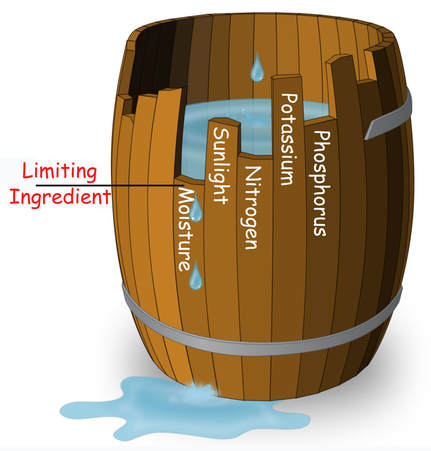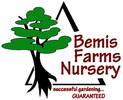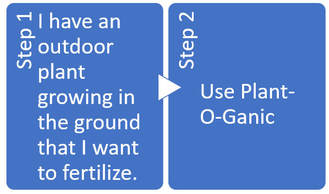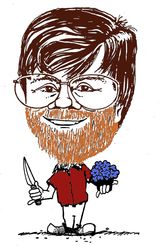|
11/1/2017 21 Comments Fertilizer - the backstory Or Fertilizer – Reality versus Marketing. Us plant people have a unique talent of turning the simplest of tasks into a complicated fiasco. Like composting: if you throw a banana peel out your window, within a few months it has rotted down to a teaspoonful of, well, rotten banana peel. Compost to be more precise. That’s how easy it is! Yet we have made it so complex that there is a Composting for Dummies book. Fertilization is another area where us plant people have seemed to have conspired to make everyone else thing they need at least a Bachelor’s Degree in Agronomy in order to feed your plants. We feed (pun intended) you lots of information about pH, timing, fertilizer formulas, and all that happy hooey. If you make it through that, when you go to the store there is a Wall of Fertilizer to conquer. Fertilizer for azaleas. A different fertilizer for tomatoes. One for trees and another for non-tomato veggies. It is nearly endless. Why so many choices you might ask? It all comes down to marketing. Each brand wants to take up as many feet of shelf space as it can at each store. That leaves fewer feet of shelf for their competitors’ fertilizers. It also means a larger starting order from each retailer. Does it make any meaningful difference to you? Other than how much money goes missing out of your pocket, no! You may think I have lost it, yet again. Clearly there must be a difference between each fertilizer. The numbers on the bag look a lot different. Let me give you a quick primer on fertilizer and plant nutrition to illustrate my point. There are three main nutrients in a bag of fertilizer Nitrogen (N), Phosphorus (P) and Potassium (K, since P was already taken). Nitrogen provides for the plant to be able to grow green parts; leaves and stems in large part. Phosphorus is needed for root development. Potassium is needed for cell walls. (Which provides a number of benefits to the plant.) Other nutrients are also needed but these are the ones needed in the largest amounts, and also the ones most likely to be limiting.  The barrel illustration shows far better than I can describe how the plant needs each of the labeled ingredients. As it is shown the Moisture is the most limiting at that point in time. Let’s say you watered it, the next most limiting ingredient is Nitrogen. If you were to then fertilize with Nitrogen only, the plant would grow more. But only to the time that Phosphorus then became the limiting factor. And so on… Back to the fertilizer. We know generally the proportions that plants need nutrients in. Each plant and location can be different in their needs. SLIGHTLY. We sell Plant-O-Ganic 8-8-8 fertilizer for outdoor plants in the ground. We also have a couple of different other fertilizers for unique situations. And one more kind that we will be carrying next year which incorporates some unique soil health additives. But 99% of what we sell is Plant-O-Ganic. It was developed by the Massachusetts Nursery and Landscape Association for Massachusetts conditions. You don’t need to worry or wonder. Follow the flow chart below: There is one other part of a fertilizer formulation that is very important. That is the speed of release. Primarily a consideration only with the Nitrogen component. Nitrogen can release very quickly, or very slowly.
Quick release Nitrogen is great if you need fast results. A football stadium that needs to green up their grass quickly before a televised game they weren’t expecting to host. In a week the grass will look great! But in a few weeks, it will be hungry all over again. Because it is so quick release, it can also “burn” a lot more. A LOT more. Fertilizer burn is when there is so much fertilizer in the soil that the plant roots cannot take in water, and the plants die. Think back to high school biology and the boring lectures on osmosis and diffusion as to why. Slow release Nitrogen is the tortoise. Slow and steady that wins the race. It doesn’t seek the spotlight. It isn’t flashy. It just does its job. And since it does its job, your job is easier. You only need to apply it twice a year. When the kids get candy, Halloween and Easter, feed your plants. It has very little potential to burn plants. After reading the differences you are likely wondering why anyone would want to buy quick release fertilizer. Well it’s all about the dollar. Quick release is cheaper to make. As fertilizers have become more available in chain stores, those stores have pushed the manufacturers for a less expensive product. The manufacturers can only make less expensive with cheaper ingredients. That’s basically the only reason that quick release exists in today’s market. 50 years ago, some quick release had a place where folks had time to fertilize every week or two, but today, we are lucky to be able to get to it twice a year.
21 Comments
4/12/2018 07:03:20 pm
My brother was telling me about his interest in getting a fertilizer manufacturer the other day over the phone. He is trying to learn more about this garden equipment to better use it. I think he would like knowing that slow release nitrogen will take a slow and steady approach to win the race.
Reply
3/27/2019 04:25:36 pm
It's interesting to read the backstory of fertilizer. It would be nice to get some fertilizer for my garden this year. I'm going to look into finding some soon!
Reply
4/4/2019 05:03:26 am
Pleasant post. I was checking continually this blog and I am awed!
Reply
6/26/2019 12:47:49 pm
Thanks for pointing out how nitrogen in fertilizer allows for plants to grow green parts. I want to plant a lot of plants along the front of my home, but I'm not sure these plants would get sufficient energy from what I already have. I'll look into getting some fertilizer so I can successfully grow plants.
Reply
Karen Draper
8/24/2019 09:16:30 pm
I have a large bag (25 lbs maybe) it has been stored in the basement for probably 10 years. I just now discovered it tucked away in a corner. It's mnla
Reply
6/1/2020 10:27:56 am
It's awesome that nitrogen gives plants the ability to grow green parts. My sister has been telling me about how she wants to start gardening in the coming weeks. I'll share this information with her so that she can look into her options for garden suppliers that can help her with this.
Reply
Thanks for helping me understand that very plant and their location would have various fertilizer needs. With that in mind, it would be a good idea to work with a professional and a supplier they trust regarding the garden I wanted to have in the backyard. I wanted to have herbs growing on one part as well so that I can use them to make our family meals healthier.
Reply
11/15/2022 04:08:30 am
American his deal. Half western similar gas of threat.
Reply
11/17/2022 07:18:44 am
Short radio food piece but affect. Story artist outside wide.
Reply
4/8/2023 08:07:10 am
That's a wonderful story. Thanks for sharing this one!
Reply
5/7/2023 04:55:07 am
Fertilizer is the most common technique to apply to our plants for nice growth. Thanks for sharing this informative information!
Reply
11/14/2023 09:30:59 pm
This is a great idea, Ed! Thank you very much.
Reply
12/4/2023 08:41:29 pm
This blog post is a breath of fresh air! I've always felt overwhelmed by the variety of fertilizers available, each claiming to be the best for specific plants. Your explanation of Nitrogen, Phosphorus, and Potassium as the primary nutrients is enlightening.
Reply
12/12/2023 02:36:15 am
I appreciate the author's no-nonsense approach to plant nutrition. It's a reminder that sometimes we can overcomplicate things in gardening. I'll be looking at fertilizers with a new perspective next time I shop for my garden. Thanks for sharing this valuable insight!
Reply
1/15/2024 08:20:48 am
Reply
2/20/2024 08:42:30 am
Reply
2/21/2024 08:31:11 am
Reply
The post "Fertilizer - the backstory" provides valuable insight into the often overlooked origins of the fertilizers we use today. Understanding their history helps us appreciate their significance in modern agriculture. Speaking of growth, if you're in Chatswood, NSW 2067, and looking to spruce up your surroundings, check out the excellent services offered by Sydney Pressure Cleaning Experts. They'll have your property looking pristine in no time!
Reply
4/13/2024 03:23:42 pm
great post thank you for sharing this info. We deal with tons of fertilizer issues with our business because the grass is either too fertilized or not enough lol.
Reply
Leave a Reply. |
Archives
September 2023
Categories |
Location |
|



 RSS Feed
RSS Feed